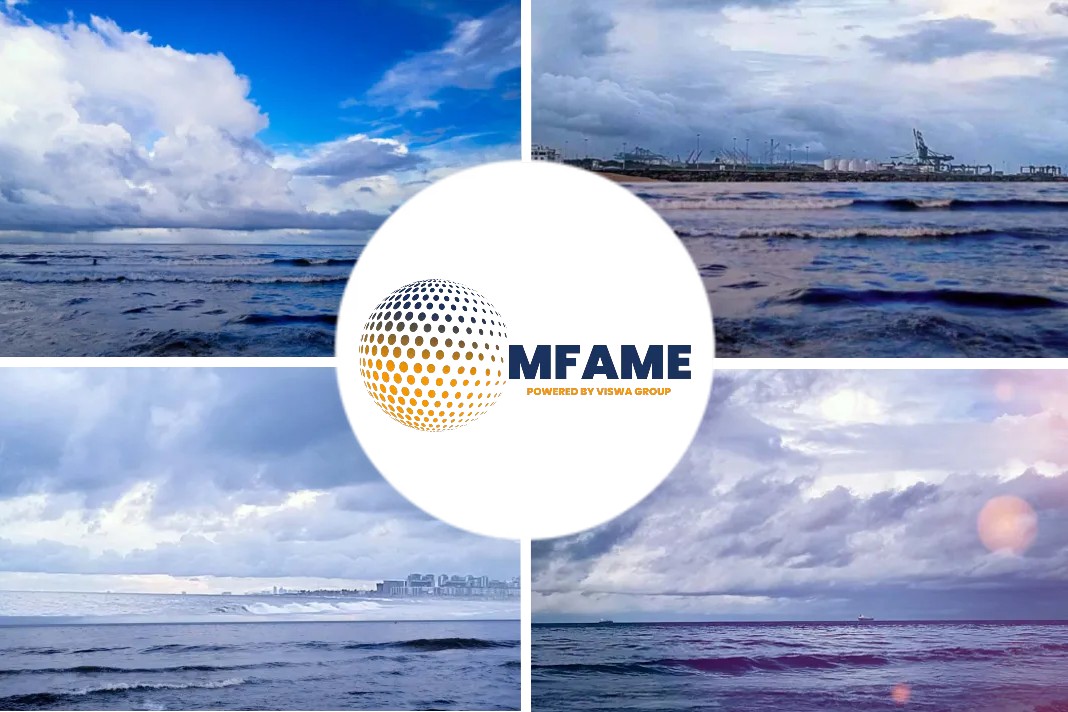
A sonar system being installed on new U.S. Navy Constellation-class frigates could also protect merchant ships during a conflict and give them the ability to search for submarines, according to the company that manufactures the technology, reports Defense One.
Anti-submarine asset
The towed-sensor system is already being used by U.S. allies and could be quickly installed on non-military ships.
“It’s a modular system that can be placed on vessels of opportunity,” said Mark Bock, vice president for strategy and business development at Thales’ Advanced Acoustic Concepts.
At the Surface Navy Association conference in Arlington, Virginia, this week, the company showed off a video of the technology being installed on a commercial ship within 48 hours, turning the vessel into an anti-submarine “asset,” Bock said.
“We believe we can repeat that turnaround [time],” he said.
The company believes the sonar system could be loaded on a military cargo plane and quickly flown to a ship that needs it.
“This is not a concept that is new or developmental,” Bock said. “It’s a concept of how to rapidly address [anti-submarine warfare] capacity from a DOD or navy perspective.”
U.S. Transportation Command boss Gen. Jacqueline Van Ovost said in October that the military would rely heavily on commercial cargo ships and aircraft to replenish troops during a war in the vast spaces of the Pacific. Van Ovost said the command is looking at placing military advisors on merchant ships along with special communications gear that gives the ships a better picture of enemy locations.
Last March, the Navy said it would install Advanced Acoustic Concepts’ CAPTAS anti-submarine sonar on its Constellation-class frigates over similar Raytheon-made technology.
About the sonar system
The sonar system is made up of a long cable that tows a sensor in the water that pings for submarines. Unlike the Navy’s current bow-mounted sonars, the so-called variable-depth sonar can be “placed at a depth that has the highest probability of getting a target acquisition,” Bock said.
Thales acquired Advanced Acoustic Concepts, a undersea technology joint venture it previously had with Leonardo DRS, in July. The acquisition, Thales said at the time, was to “increase its engineering and industrial footprint in the U.S. defense market, with reinforced U.S.-based teams and capabilities.”
The anti-submarine technology is already used on British, French, Spanish, and Chilean ships.
“You’re talking about a system that’s mature, has a track record, past performance record against targets,” Bock said.
One might ask whether linking a merchant ship to a military sensor network would make it more of a target. The classification of civilian vessels into legitimate targets and illegal ones is an unsettled area of international law; much depends on circumstances. The U.S. Navy’s own guidance indicates that merchant ships “incorporated into, or assisting in any way, the intelligence system of an enemy’s armed forces” may be “attacked and destroyed” by aircraft or surface warships “with or without prior warning.”
Did you subscribe to our daily Newsletter?
It’s Free! Click here to Subscribe
Source: Defense One















